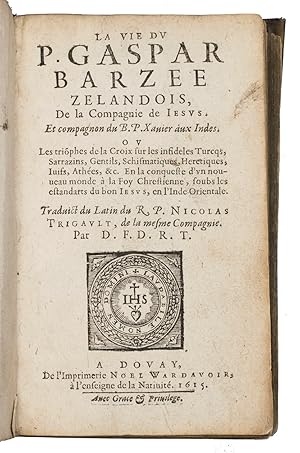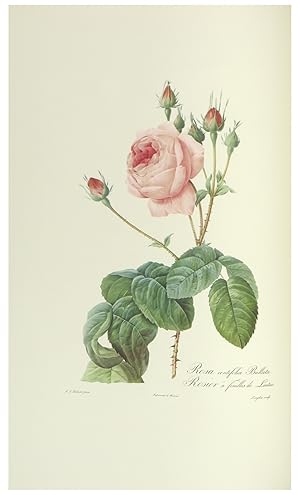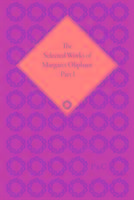biographies (Plus de 4 800 résultats)
Type d'article
- Tous les types d'articles
- Livres (4 535)
- Magazines & Périodiques (9)
- Bandes dessinées (2)
- Partitions de musique
- Art, Affiches et Gravures (59)
- Photographies (15)
- Cartes (7)
-
Manuscrits &
Papiers anciens (251)
Etat
Reliure
Particularités
- Edition originale (2 403)
- Signé (1 096)
- Jaquette (647)
- Avec images (3 531)
- Sans impression à la demande (4 871)
Livraison gratuite
Pays
Evaluation du vendeur
-
Proofreading Notes on the Biography of Rulin in the History of the Qing Dynasty (Eight Volumes)(Chinese Edition)
Edité par Commercial Press, 2021
ISBN 10 : 7100187303ISBN 13 : 9787100187305
Vendeur : liu xing, Nanjing JiangSu, JS, Chine
Livre
paperback. Etat : New. Paperback. Pub Date: 2021-08-01 Pages: 1152 Language: Chinese Publisher: The Commercial Press. Manuscripts of the History of the Qing Dynasty. in four volumes.?Volumes 1 to 3 are roughly classified into academic ancestry districts. and are sorted in order of seniority. They record the life and learning activities of nearly 300 scholars in a generation of Confucian scholars.?Volume 1 is devoted to the Confucianism of Confucianism; Volumes 2 and 3 are devoted to the scholars of Confucianism. El.
-
The Worst Journey In The World. Antarctic 1910-1913 -- 1922 FIRST UK EDITION TWO VOLUMES -- WITH Real Photo of Cherry-Garrard
Edité par Constable And Company Limited, London, 1922
Vendeur : JP MOUNTAIN BOOKS, PORTLAND, OR, Etats-Unis
Livre Edition originale
Hardcover. Etat : Very Good. No Jacket. 1st Edition. 1922 FIRST UK EDITION -- Two Volumes. COMPLETE with all plates, maps, and pages including 48 plates (6 color), 5 maps (4 folding), and 10 panoramic views (not found in other editions). Original pale blue cloth, gilt lettering front covers and spines, original white endpapers. Loose in volume one is an original gelatin silver photo portrait (58mm x 54mm) of Apsley Cherry-Garrard seated on a retaining wall. Comparing this portrait with those in Wheeler's biography of Cherry-Garrard, CHERRY [Johnathan Cape 2001 and Random House 2002], it is clear that this is a photo portrait of Cherry-Garrard wearing spectacles which seems to be rare as most photos of him show him without spectacles, but it is well known that Cherry-Garrard was quite near-sighted and needed to wear glasses. Based on his appearance, the photo was likely taken between 1939 and 1945. See photo. Original photo portraits of Cherry-Garrard are rare. CONDITION: Same old owner name penned to top corner of FFEP of each volume (indicating that this is not a mixed set) otherwise no previous owner marks or writing on any pages, 17mm snag/tear to cloth of lower front cover of volume one near spine (relaid/glued back to board.now looks like a thin scratch), no other restorations, rubbing to tips of corners both volumes, spine ends rubbed with minor fraying, faint smudge mark front and rear of volume two, minor fore-edge foxing, light foxing on some pages facing the folding panoramas and maps but nearly all other pages are completely free of foxing, solid bindings with no cracking to original EPs, small red stain at middle of rear inside hinge both volumes apparently caused by binder's glue or mesh or some inside colored paper backing (? see photos). Two volumes, 226mm tall x 140mm, volume one: lxiv + 300 + [4] pages, 30 plate leaves [including color frontispiece, 2 folding panoramas, and 27 plate leaves (3 color; 36 sketches, paintings and photographs)], 4 maps [3 folding], original tissue paper guard over frontispiece; volume two: viii + 301-585 + [1] + blank leaf, 28 plate leaves [including color frontispiece, 8 folding panoramas, and 19 plate leaves (1 color, 24 sketches, painting, and photographs)], 1 folding map, original tissue paper guard over frontispiece. Rosove 71.A2 "Very scarce. Significantly scarcer than the previous." [i. e, scarcer than the quarter linen & blue-gray papered boards binding]. PHOTOS ARE OF THE ACTUAL VOLUMES BEING OFFERED.
-
Ensayo de una memoria sobre un nuevo método de medir las montañas, por media del termómetro, y el agua hirviendo: seguida de un apéndice Que contiene algunas observaciones muy importantes y útiles para la mejor inteligencia de dicha Memoria.
Edité par Burdeos: Imprenta de Lawalle Jóven y Sobrino, 1819, 1819
Vendeur : Peter Harrington. ABA/ ILAB., London, Royaume-Uni
Edition originale
First edition of the posthumously published work in which Caldas describes his principal scientific achievement, the discovery of a method for measuring altitude by the boiling point of pure water. Caldas (1768-1816), a self-taught scientist - and a lawyer and military engineer - from Popayán, New Granada, independently discovered the hypsometric principle and in 1801 constructed the first hypsometric thermometer. Later that same year he met Alexander von Humboldt, who had heard of Caldas and was impressed by the quality of his work given his extreme academic isolation. "Humboldt trained Caldas in many scientific methods and introduced him to new instruments; when the group travelled to Chile Humboldt began to teach him botany, which would continue to be his focus for many years" (NHM). Caldas went on to become director of the Astronomical Observatory of Santa Fe and to establish El Semanario, the first weekly geographical periodical in the Viceroyalty. During the Spanish American Reconquista he was executed by firing squad aged 48 for his involvement in the fight for New Granada's (modern-day Colombia's) independence. See Natural History Museum's biography of Caldas, JSTOR Global Plants database. Quarto (230 x 185 mm). Contemporary dark brown sheep, smooth spine backed with lighter brown sheep, new endpapers. Folding engraved plate of thermometer facing p. 20, tables to text. Without the half-title. Extremities lightly worn, a few scuffs to boards, front endpapers a little tight causing some stiffness in hinge, three discreet paper repairs to gutter of title page, the contents generally crisp and clean with just a few neat pencilled marginal notes and a few instances of faint foxing. A very good copy.
-
Four Dissertations. I. The Natural History of Religion. II. Of the Passions. III. Of Tragedy. IV. Of the Standard of Taste.
Edité par London: printed for A. Millar, 1757, 1757
Vendeur : Peter Harrington. ABA/ ILAB., London, Royaume-Uni
Edition originale
First edition, the first appearance of all four essays, complete with the dedicatory leaves to John Home. Originally the collection was to include the first three essays plus "Of Suicide" and "Of the Immortality of the Soul", but Hume omitted them fearing controversy, replacing them with "Of the Standard of Taste". It was his final major work to be published, and Hume never allowed the collection to be reprinted. The book displays considerable variation between copies. Here, the first word on p. 9 is "ative" - the first sheets were printed correctly "lative", but the "l" was then dropped, and again reinserted. The first word on p. 131 is uncorrected as "Iancing", afterwards corrected to "lancing". Cancels C12 and D1 and the omission of K5-K8 agree with the description of Todd, p. 200. The dedicatory leaves to John Home were removed by Hume and afterwards reinserted. Some copies were issued in the interim and so the leaves are sometimes lacking, here present. Chuo I, 45; ESTC T4011; Jessop, pp. 33-5; Rothschild 1176; Todd, pp. 200-1. E. C. Mossner, "Hume's Four Dissertations: an essay in biography and bibliography", Modern Philology, 48:1, 1950, pp. 37-57. Duodecimo (163 x 99 mm). Contemporary calf, gilt rules to spine, new label to style. Contemporary ownership signature of one James MacIvor to front free endpaper and title page; a few pencilled annotations to contents. Joints and extremities restored. Front free endpaper excised at head, another initial binder's blank neatly excised, slight creasing to leaves in first gathering. A very good copy.
-
Histoire d'O, a collection formed by John Baxter [58 Vols].
Edité par Various publishers - 2004, 1925
Vendeur : Blackwell's Rare Books ABA ILAB BA, Oxford, Royaume-Uni
FIRST EDITIONS and later editions, including many illustrated versions of the primary text, various sizes and formats, original wrappers (predominantly), cloth or boards, one of the key Aury texts in an attractive calf binding by Claude Adelaide-Bremond, dustjackets present where applicable, the condition ranging from fair to fine but in the condition (particularly in respect of the key texts) good overall. For a work that so rapidly achieved fame and notoriety, the protection of the identity of L'Histoire d'O's author was a considerable achievement: the majority of the names suggested in contemporary circles were, naturally enough given the book's subject-matter, men including Alain Robbe-Grillet and Jean Paulhan, both of whom played key roles in its history which are represented by this superb archive of editions of the work and related material. The collection includes two copies of different issues of the first edition, inscribed by the book's true author Anne Desclos under her usual nom-de-plume, Dominique Aury (one also signed as Réage) the fact of her authorship not having been revealed until forty years on, when Desclos was in her eighties, explains the scarcity of presentation copies with only a few such having appeared at auctions in Paris in the last twenty years. Those here, inscribed to the film-maker Marie-Dominique Montel, who interviewed Desclos about the book towards the end of her life, are the core of this collection formed by Montel's husband, the author and bibliophile John Baxter. It includes numerous subsequent editions of the work, including those issued by Jean-Jacques Pauvert over the fifteen years following its initial success, and its sequel, the limited edition with lithographs by Leonor Fini, various other illustrated editions (including a comic-strip version) as well as artistic responses to the work, and editions in English (amongst which the Grove Press edition of Richard Seaver). The pictorial responses include the 1975 film version - present here in the form of both a DVD and a celluloid still. Whilst the continuing interest in the work is reflected in secondary material, including 'Conversations with Pauline Réage' published in 1979 and the first biography of Aury from 2006, its impact is perhaps best measured by a companion work that playfully inserts itself into the question of the author's identity: 'L'Image' by Jean de Berg appeared in 1956, dedicated to Réage and with an introduction signed with the initials 'P.R.' though in fact by Alain Robbe-Grillet, who would soon after marry the book's true author, Catherine Rstakian. The first edition with the etching by Hans Bellmer, one of 90 copies, is scarce and present here along with an 'hors commerce' review copy. The parallel literary career of Dominique Aury, as critic, editor and translator is well represented including scarce examples of her own poetry and her translation of Evelyn Waugh's 'The Loved One' as is that of her lover, and the inspiration for 'L'Histoire d'O', Jean Paulhan (amongst which, a book inscribed to Georges Sadoul). But the legacy of both is subsumed by the status of the work which began as a Sadeian experiment in literary seduction and became a classic of erotic literature.
-
The Life of Dr. George Bull Late Lord Bishop of St. David's With the history of those controversies in which he was engaged: and an abstract of those fundamental doctrines which he maintained and defended in the Latin tongue.
Edité par Printed for Richard Smith., 1713
Vendeur : Blackwell's Rare Books ABA ILAB BA, Oxford, Royaume-Uni
FIRST EDITION; engraved portrait frontispiece of Bull by Van der Gucht, woodcut initials and head-pieces, hand-ruled in red throughout; universally a little toned but very good; pp. xvi, 542, [2]; 8vo; contemporary full crimson morocco, elaborately gilt, with cottage roof motif and the arms of Queen Anne (1665-1714), gilt edges, marbled endpapers; neatly rebacked, head of spine worn, board edges rubbed, 19th-century morocco slipcase; provenance: Anne, Queen of England, Scotland and Ireland (1665-1714); Lady Abigail Masham (1670-1734) and her husband Samuel (1678/79-1758); Richard Palmer of Otes, Essex; W. A. Foyle, Beeleigh Abbey. An attractive Queen Anne binding - a restrained version of the rather more profuse Restoration bindings - on this biography of the contemporary divine George Bull (1634-1710). The Queen's arms here reflect include her motto Semper Eadem (Ever the Same), which she borrowed from Elizabeth I (who in turn took it from her mother Anne Boleyn). This was doubtless a gift from the ailing Queen to Abigail Masham (née Hill, 1670-1734), her (now infamous) 'favourite'. Abigail was the daughter of Francis Hill, a London merchant, and Elizabeth Hill (née Jennings). The family was reduced to poor circumstances through her father's financial speculations, and Abigail was forced to work as a servant. Her mother was an aunt of Sarah Jennings, later Duchess of Marlborough, who offered a reprieve; she introduced Abigail to court, where she became a Lady of the Bedchamber. She there met her husband Samuel (1678/79-1758), the eighth son of Sir Francis Masham of Otes in Essex, who had been introduced to the Royal Household as page to Prince George of Denmark, and remained at court, becoming King's Remembrancer in 1716. The Mashams founded a short-lived courtly dynasty; their son Samuel (1712-1776) was Lord of the Bedchamber to George II and Auditor General of the Household of George, Prince of Wales. At the time of his marriage to his second wife Charlotte Dive he sold much of his family library to a bookseller. He and his wife were extravagant and borrowed money on a grand scale, which led to the eventual loss of Otes to their estate manager Robert Palmer. His son Richard, whose bookplate appears in the present volume, inherited Otes from his father and disposed of it at auction in 1801.
-
I.G. de rebus auspiciis serenissimi, & potentissimi Caroli gratia magnæ Britanniæ, &c. sub imperio illustrissimi Iacobi Montisrosarum marchionis : Supremi Scotiæ gubernatoris anno 1644, & duobus sequentibus præclarè gestis, commentarius
Edité par Paris, ex Typographia Ioannis Bessin, propè Collegium Remense, 1648
Vendeur : Sokol Books Ltd. ABA ILAB, London, Royaume-Uni
Livre
Hardcover. Etat : Fine. 8vo. pp. (xxiv), 563 (i). Large paper, Roman letter, some Italic. Woodcut and typographical headpieces, small woodcut initials, printed label, 6506 from the sale of Bolongaro-Crevenna at head of front pastedown, bookplate of Robert Maxtone Graham below. Light age yellowing, the very rare marginal spot. A fine, large paper copy in exceptional contemporary French red morocco in the style of Le Gascon, covers double gilt ruled to a panel design, outer panel filled with a fine scrolled roll, middle panel with two fine dentelle scrolls elaborate fleurons to corners, central panel bordered with a small pointillé roll, elaborate corner pieces with scrolled and pointillé tools around a central oval worked to a lozenge form with fine scrolled tools, spine richly gilt with gilt ruled raised bands, double gilt ruled with further pontillé rules to compartments, richly gilt with scrolled tools and semé of small tools, edges with gilt dentelle roll, combed marble endpapers. A fine, large paper copy of this most interesting contemporary biography of the feats of the great Scottish General, James Montrose, in a stunning contemporary morocco binding. When Leslie and the Scots army took Newcastle on 19th October 1644, Wishart was taken prisoner, and, on the charge of corresponding with royalists, was imprisoned in the Thieves Hole, Edinburgh. After 7 months in prison, Wishart was liberated when the Marquis of Montrose arrived in Edinburgh after his victory at Kilsyth on 15th August 1645. Wishart joined the royal army at Bothwell, and was appointed private chaplain to the Marquis of Montrose. In this capacity he accompanied the Marquis in his campaign both at home and abroad, and his narrative of Montrose s campaign is that of an eye-witness and biographer. It was first published in Amsterdam 1647. When the Scottish Parliament tried Montrose in abstentia in 1649, Wishart s book was brought as evidence against him. A bounty was pledged by Parliament and the Church of Scotland for his capture, and he was sentenced in abstentia to be hanged with Wishart s book around his neck. The sentence was carried out in the following year after Montrose was captured and brought to Edinburgh. The Wishart Society. Les reliures de Le Gascon sont de veritables objets d art. Edouard Rouveyre. Connaissances nécessaires à un bibliophile. This binding is very similar in style and the tools are nearly identical to a binding attributed to Le Gascon in a Sotheby s sale at Paris, 2011, sale PF1113, lot 51, the 1595 edition of the works of Montaigne. It shares the same oval centre surrounded by near identical scrolled tools and pointillé work. The style of Le Gascon, so-called, was in vogue between the years 1640, and 1665 Herbert P. Horne An Essay in the History of Gold-Tooled Bindings . The binding is also very similar in design and tools to another binding attributed to Le Gascon in the Tenschert Catalogue Biblia Sacra 2004, no. 59, a Greek New Testament. Many of the best binders of the period imitated the work of Le Gascon, who was then at the height of fashion, and if this binding is not by Le Gascon or his atelier, it is by someone who was imitating him as closely as possible. The gilding and use of pointillé tools is particularly fine, the morocco is of the highest quality. As this is a large paper copy in a very rich binding, it was almost certainly made for presentation, though there is no indication of to whom. A wonderful copy from the extraordinary library of Bolongaro-Crevenna, the francophile Italian merchant from Amsterdam, whose magnificent collection was sold in Paris between 1775 and 1793. This work was in his sale of History books in 1789 lot 6506; see Catalogue des livres de la bibliothèque de M. Pierre Antoine Bologaro-Crevenna Volume 4 Amsterdam, chez Changuion 1789.
-
Sarmatiae Bellatores.
Edité par Heinrich Crith, 1631
Vendeur : Sokol Books Ltd. ABA ILAB, London, Royaume-Uni
Livre Edition originale
Hardcover. Etat : Good. 1st Edition. FIRST EDITION. 4to, (viii) 243 [i.e. 145] (iii). Roman and italic letter, Christogram of the Jesuits to t-p. Light age browning, a few deckle edges, very rare and mostly marginal spots, spillage to p. 113 mildly affecting 5 words. A very good copy in contemporary vellum over boards, C19 Nordkirchen bookplate of the Dukes of Arenberg to front pastedown. A very good copy of the first edition of Starowolski s most acclaimed Sarmatian Warriors , containing 130 biographies of Polish knights, rulers and magnates. Szymon Starowolski (1588 1656; Simon Starovolscius) was a scholar, historian and priest in the Polish-Lithuanian Commonwealth. After completing his studies at the Kraków Academy, he became secretary to the famous military commander Hetman Jan Karol Chodkiewicz, and later worked as a preceptor to many young nobles. He travelled to Germany, the Netherlands, Spain, Italy and France. Exceptionally prolific, he wrote about 70 works in Latin and Polish on many different subjects, including law, politics, theology, the military arts, philosophy, customs, literature and history. Sarmatiae Bellatores is one of Starowolski s most famous works, comprising biographical accounts of Polish warriors from the Mieszko I (c. 922/45-992) to Stefan Chmielecki (1580-1630). Intended for a foreign public, its purpose was to counter international views that questioned the military prowess of the Poles. The mythical common descent of all nations of the Polish-Lithuanian Commonwealth from the ancient Sarmatian warrior-heroes, who successfully resisted Roman attempts to conquer them, was fashioned into a statement of the Commonwealth s constitutional and political superiority over West European societies oppressed by absolute royal power. Szymon Starowolski founded his reputation as a patriotic historian early on by collecting a pantheon of Sarmatian heroes, of bellatores et scriptores, who included representatives of all nations of the Commonwealth [ ] References to great historical rulers and nations pointed at the imitation of past virtue (Friedrick). Medieval heroes in Starowolski s Sarmatiae Bellatores of 1631 fight, plunder, demolish, and destroy with fire and sword (the favourite phrase of this historian), and only rarely do they build something in their domains. (Barbara Arciszewska) Starowolski s work is an interesting attempt to represent the Ruthenian [i.e. East Slavic] and Lithuanian nobility as part of the Polish-Sarmatian noble nation, as well as to include Ukranian Cossackdom in that national model. (Plokhy) The Nordkirchen bookplate combines the blazons of Mária von Plettenberg-Wittem (1809-1861) and of her husband Miklós Ferenc Esterházy de Galántha (1804-1885), to whom she brought the Nordkirchen castle as part of her dowry. In 1903, the castle and its library passed to Herzog Engelbert-Maria von Arenberg (1872-1949). His son Engelbert-Karl (1899-1974), the 10th duke of Arenberg, began selling off the ducal library in 1951. USTC 2073819; VD17 23: 230454F; BM STC Ger. 17 century, S2670. Not in Brunet or Graesse. S. Plokhy, The Cossacks and Religion in Early Modern Ukraine (2001). K. Friedrick, History, Myth and Historical Identity, in: Collins and Taylor (eds), Early Modern Europe (2008). B. Arciszewska, Early Modern Conceptualizations of Medieval History, Intersections 60 (2018). Worldcat records only one copy in the US (Yale).
-
Vitae novissime longe diligentius repositae, majoreque diligentia castigatae, cum copiosiore verioreque indice, necnon cum Aemilii Probi vitis, una cum figuris suis locis apte dispositis.
Edité par Venice, Melchiorre Sessa [the elder] & Pietro Ravani, 26 November 1516., 1516
Vendeur : Bernard Quaritch Ltd ABA ILAB, London, Royaume-Uni
Folio, ff. [26], CCCLX, [1 (blank)]; title in red and black with woodcut printer's device, woodcut criblé initials throughout and 78 large woodcut illustrations; lightly dust-stained title, with some neat marginal repairs, light marginal damp-stain to a few final leaves, but a very good copy in recent calf, panelled in blind with corner-pieces, upper board lettered directly in blind, fore-edge lettered in ink; near contemporary annotations in a neat hand to c. 50 pp., mainly concentrated in the lives of Hannibal and Demosthenes.First substantially illustrated edition of Plutarch's Lives, with signs of early reading. First published in this popular translation in Paris in 1514 by French scholar-printer Jodocus Badius Ascensius (1462 1535) in collaboration with Jean Petit, the text is here accompanied by seventy-eight splendid woodcut illustrations in the manner of Benedetto Bordone (1460 1531), all specifically engraved for this edition and appearing here for the first time. EDIT16 30046; USTC 849959; Essling 597; Renouard, Badius Ascensius Plutarchus B2 (III, p. 178); Sander 5785. Language: Latin.
-
Outer Dark (with signed Orin Borsten card)
Edité par Random House, 1968
Vendeur : Books 4 Ewe, York, SC, Etats-Unis
Livre Edition originale Signé
Hardcover. Etat : Very Good. Etat de la jaquette : Very Good. 1st Edition. . Author: Cormac McCarthy Title: Outer Dark Publisher: Random House Year Published: 1968 Edition: First Edition, First Printing . McCarthy s second novel, included is a laid in card signed for Orin Borsten! Orin Borsten was a well known Hollywood publicist and he also wrote stage and screenplays. Borsten most famously co-authored the William Faulkner biography, A Loving Gentleman: The Love Story of William Faulkner and Meta Carpenter , in 1976. He also has writing credits on the screenplays for Angel Baby (1961) and Outer Limits (1963), among others. . A fabulous association and one can imagine what drew the two together was a mutual affinity for William Faulkner. The card displays a vintage 1970 s style McCarthy inscription and signature, highly sought after as he signed much more infrequently prior to All the Pretty Horses. . Book: VG with some foxing to text block. Spine ends very slightly pushed. Light toning to top edge and topstain. Taut binding, square and sturdy. Sharp corners, clean internally. Nice gilt lettering to spine. . Jacket: VG or perhaps a touch better. Chip to top crown and a couple of very small closed tears to top rear panel, some soiling at edges and flap gutters where the jacket is white. The $4.95 price is intact and not clipped. Overall a really neat copy with great association and early McCarthy signature! . Note: Check out my other listing for a Child of God which has likewise been signed to Orin Borsten! . #cormacmccarthy #bloodmeridian #orinborsten #outerdark #signedbooks #modernfirsteditions #suttree #nocountryforoldmen #bookstore #bookshop #books4ewe #bookish #booktok #booksthatmatter #bookseller #rarebooks #bibliophile #bookcollection #bookcollector. Inscribed by Author(s).
-
Metamorphosis Insectorum Surinamensium, Plate No. 6; Thistle and Moths
Edité par The Netherlands, 1705
Vendeur : Rob Zanger Rare Books LLC, Middletown, NY, Etats-Unis
Engraving with hand coloring in watercolor on cream laid Honig paper with a large heraldic watermark with a Strasbourg Lily and the initials WR. 12 7/8 x 95/8 inches (327 x 245 mm), sheet 20 5/8 x 14 inches (522 x 354), full margins. Minor handling wear, and scattered light spots of minor discoloration throughout. Colors remain extremely vibrant. From the edition engraved by Pieter Sluyter, printed between 1719 and 1730. Translation of the original text regarding Plate No. 6: "This thistle, called Maccai in America, grows to a height of 4 ells. It has a white blossom with yellow threads in the middle. It yields yellow and red berries, which are eaten by people and birds. The stem becomes tall and hard, so that it has to be cut down with an axe. The red caterpillar with yellow stripes sitting at the top has long stiff and brown hairs. It eats the leaves of this thistle. On 4 August 1700 I saw it change into a pupa, having shed its skin beforehand after the habit of all caterpillars. It hung itself in a wood-coloured cocoon, from which a beautiful moth emerged on 30 August. The lower caterpillar is yellow, adorned with black patches and long hairs, and is of a rare variety. They lie together in groups, the head of one always gripping the tail of another, and thus form a circle. When scattered, they rush back together as fast as quicksilver. This thistle is their food. On 20 July 1700 they cocooned themselves. and on 24 September the first moth emerged. Seen through the magnifying glass, both these moths reveal hair like the skins of Hungarian bears. As beautiful as they are when observed without the magnifying glass, they are weirdly bristly and ugly when seen through the latter, having hairs like spikes of barley. I have found that all moths are covered with hairs, all butterflies with feathers, and all translucent orglassy butterflies with scales." Notes on the watermark: "Watermarks representing the arms of Strasbourg, a bend on a â ¢shield surmounted by a large fleur-de-lys, are characteristic of 'Royal Paper'; paper of the largest standard size and always of high quality. In various forms, the 'Strasbourg Lily' occurs in Angoumois, Dutch and English papers in the later seventeenth and eighteenth centuries. The `WR' monogram at the bottom of the mark probably originated as the personal sign of Wendelin Riehel, a printer who rented a paper mill in Strasbourg during the sixteenth century; it was later widely used as a neat but meaningless termination to the pendant centre-line of many heraldic watermarks." [Viola a da Gamba Society, Appendix I: Watermarks and Paper Types, 268-272] The design of the Strasbourg Lily was used by the Honig papermakers between 1741 and 1822. The lettering "C & I HONIG" occurs between 1730 and 1869. It is known that the brothers Cornelis Jacobszoon and Jan Jacobszoon Honig worked together under the name "C & I Honig" but started new companies, each one for himself, in 1738. Cornelis (1683-1755) continued under the name "C & I Honig," now together with his son Jacob Cornelisz Honig (1707-1770). [Klepikov, S. A., Some information over the "Honig" watermarks, IPH Information. Bulletin of the International Association of Paper Historians (IPH), N.S., vol. 6, no. 1 (January 1972), 10-13.] Maria Sibylla Merian was one of the most highly respected entomologists of the 17th century, and remains today one of the field's most significant figures. A German-born naturalist and scientific illustrator, she reared herself on the study of caterpillars, and made tremendous contributions to the knowledge of the life cycles of numerous species. Until her detailed and careful study of the process of metamorphosis it was commonly believed that insects were "born of mud," through spontaneous generation. Trained as a miniature painter by her stepfather, she published her first book of illustrations in 1675, at the age of 28. In 1679, Merian published the first volume of the two-volume series on caterpillars, The Wondrous Transformation of Caterpillars and their Strange Diet of Flowers; the second volume followed in 1683. Each volume contained 50 plates that she engraved and etched. In 1699, Merian traveled to Dutch Guiana with her daughter to study and record the tropical insects native to South America. The result was her 1705 magnum opus, Metamorphosis Insectorum Surinamensium. Merian's Metamorphosis has been credited with heavily influencing the way naturalists presented their illustrations to include a life form in various stages of development. Years after her death, Merian has been honored by having a number of taxa and three genera named after her. According to Jennifer Pomeroy's 2018 biography, three butterflies have been named after Merian; in 1905 a form of a split-banded owlet butterfly Opsiphanes cassina merianae; in 1967 a subspecies of the common postman butterfly Heliconius melpomene meriana; and in 2018 a rare butterfly Catasticta sibyllae from Panamá. In addition, the Cuban sphinx moth has been named Erinnyis merianae, a Tessaratomidae bug has been named Plisthenes merianae, a genus of mantises has been named Sibylla, the orchid bee Eulaema meriana, and the bird-eating spider Avicularia merianae was named in her honor, referencing her research on spiders. The spider Metellina merianae was named after her in 2017. An Argentine tegu lizard has been named Salvator merianae. A toad was named Rhinella merianae. A snail was named Coquandiella meriana. The Madagascan population of the African stonechat bird was given the name Saxicola torquatus sibilla. A genus of flowering plants was named Meriania, and an iris-like plant was given the name Watsonia meriana. [Sarah B. Pomeroy; Jeyaraney Kathirithamby (2018). Maria Sibylla Merian: Artist, Scientist, Adventurer. Getty Publications.].
-
Metamorphosis Insectorum Surinamensium, Plate No. 39; Unidentified tree with moth, caterpillar and pupa
Edité par The Netherlands, 1705
Vendeur : Rob Zanger Rare Books LLC, Middletown, NY, Etats-Unis
Engraving with hand coloring in watercolor on cream laid Honig paper with a large heraldic watermark with a Strasbourg Lily and the initials WR. 12 7/8 x 95/8 inches (327 x 245 mm), sheet 20 5/8 x 14 inches (522 x 354), full margins. 1/4 inch vertical edge tear, well outside of image area, minor handling wear, and several light spots of minor discoloration, three occurring in the area of the lower portion of the branch. Colors remain extremely vibrant. From the edition engraved by Pieter Sluyter, printed between 1719 and 1730. Sybilla's notes regarding Plate No. 39: "This plant grew in my garden in Suriname, without anyone being able to tell me its name or properties. It grows more than an ell tall and bears small yellow flowers. On this plant I found large caterpillars eating its leaves. They are green and adorned with white, red and black patches. Around the end of May they spun themselves in a thin cocoon, like the one I placed on the stem. They turned into brown, liver-coloured pupae, from which on 20 June only this one moth or owlet emerged. All others had died. The moth is grey and marked wit a black and white pattern." About the watermark: "Watermarks representing the arms of Strasbourg, a bend on a â ¢shield surmounted by a large fleur-de-lys, are characteristic of 'Royal Paper'; paper of the largest standard size and always of high quality. In various forms, the 'Strasbourg Lily' occurs in Angoumois, Dutch and English papers in the later seventeenth and eighteenth centuries. The `WR' monogram at the bottom of the mark probably originated as the personal sign of Wendelin Riehel, a printer who rented a paper mill in Strasbourg during the sixteenth century; it was later widely used as a neat but meaningless termination to the pendant centre-line of many heraldic watermarks." [Viola a da Gamba Society, Appendix I: Watermarks and Paper Types, pp 268-272] The design of the Strasbourg Lily was used by the Honig papermakers between 1741 and 1822. The lettering "C & I HONIG" occurs between 1730 and 1869. It is known that the brothers Cornelis Jacobszoon and Jan Jacobszoon Honig worked together under the name "C & I Honig" but started new companies, each one for himself, in 1738. Cornelis (1683-1755) continued under the name "C & I Honig," now together with his son Jacob Cornelisz Honig (1707-1770). [Klepikov, S. A., Some information over the "Honig" watermarks, IPH Information. Bulletin of the International Association of Paper Historians (IPH), N.S., vol. 6, no. 1 (January 1972), 10-13.] Maria Sibylla Merian was one of the most highly respected entomologists of the 17th century, and remains today one of the field's most significant figures. A German-born naturalist and scientific illustrator, she reared herself on the study of caterpillars, and made tremendous contributions to the knowledge of the life cycles of numerous species. Until her detailed and careful study of the process of metamorphosis it was commonly believed that insects were "born of mud," through spontaneous generation. Trained as a miniature painter by her stepfather, she published her first book of illustrations in 1675, at the age of 28. In 1679, Merian published the first volume of the two-volume series on caterpillars, The Wondrous Transformation of Caterpillars and their Strange Diet of Flowers; the second volume followed in 1683. Each volume contained 50 plates that she engraved and etched. In 1699, Merian traveled to Dutch Guiana with her daughter to study and record the tropical insects native to South America. The result was her 1705 magnum opus, Metamorphosis Insectorum Surinamensium. Merian's Metamorphosis has been credited with heavily influencing the way naturalists presented their illustrations to include a life form in various stages of development. Years after her death, Merian has been honored by having a number of taxa and three genera named after her. According to Jennifer Pomeroy's 2018 biography, three butterflies have been named after Merian; in 1905 a form of a split-banded owlet butterfly Opsiphanes cassina merianae; in 1967 a subspecies of the common postman butterfly Heliconius melpomene meriana; and in 2018 a rare butterfly Catasticta sibyllae from Panamá. In addition, the Cuban sphinx moth has been named Erinnyis merianae, a Tessaratomidae bug has been named Plisthenes merianae, a genus of mantises has been named Sibylla, the orchid bee Eulaema meriana, and the bird-eating spider Avicularia merianae was named in her honor, referencing her research on spiders. The spider Metellina merianae was named after her in 2017. An Argentine tegu lizard has been named Salvator merianae. A toad was named Rhinella merianae. A snail was named Coquandiella meriana. The Madagascan population of the African stonechat bird was given the name Saxicola torquatus sibilla. A genus of flowering plants was named Meriania, and an iris-like plant was given the name Watsonia meriana. [Sarah B. Pomeroy; Jeyaraney Kathirithamby (2018). Maria Sibylla Merian: Artist, Scientist, Adventurer. Getty Publications.].
-
Metamorphosis Insectorum Surinamensium, Plate No. 58; Ice Cream Bean Plant, Cloudless Sulphur Butterfly and Caterpillar with Moth
Edité par The Netherlands, 1705
Vendeur : Rob Zanger Rare Books LLC, Middletown, NY, Etats-Unis
Engraving with hand coloring in watercolor on cream laid Honig paper with a large heraldic watermark with a Strasbourg Lily and the initials WR. 12 7/8 x 95/8 inches (327 x 245 mm), sheet 20 5/8 x 14 inches (522 x 354), full margins. Minor handling wear, and scattered light spots of minor discoloration throughout. Colors remain extremely vibrant. From the edition engraved by Pieter Sluyter, printed between 1719 and 1730. Translation of the original text regarding Plate No. 58: "I here show a branch from a large tree that grows in the forest in America. Its seed cases contain blackish beans, from which the trees derive the name Zoete Boonen-Boom [sweet-bean tree]. Around these beans lies a white pulp, which is very sweet and lovely. In this pulp I found white maggots, as can be seen on the open bean. These became brown pupae. On 2 April, that is, ten days later, such green flies emerged as can be seen next to the maggot. I fed the green caterpillar hanging below with the leaves of this Boonen-Boom [bean tree] as well as with the leaves of Plate 32. On 16 June 1700 it changed into a green pupa which, after ten days, turned into a butterfly like the one sitting on the bean. On this tree I also found other caterpillars in large numbers, like the one crawling on the stem at the top. It had yellow hairs and black spines. It shed its hair, stuck it to the seed case, and made an oval, grey cocoon out of it, as can be seen on the green leaf. In this cocoon it changed into a pupa. Three days later there emerged, out of all those that had cocooned themselves, such flies whose wings were spotted with brown and their bodies with red, green, silver and gold." Notes on the watermark: "Watermarks representing the arms of Strasbourg, a bend on a â ¢shield surmounted by a large fleur-de-lys, are characteristic of 'Royal Paper'; paper of the largest standard size and always of high quality. In various forms, the 'Strasbourg Lily' occurs in Angoumois, Dutch and English papers in the later seventeenth and eighteenth centuries. The `WR' monogram at the bottom of the mark probably originated as the personal sign of Wendelin Riehel, a printer who rented a paper mill in Strasbourg during the sixteenth century; it was later widely used as a neat but meaningless termination to the pendant centre-line of many heraldic watermarks." [Viola a da Gamba Society, Appendix I: Watermarks and Paper Types, 268-272] The design of the Strasbourg Lily was used by the Honig papermakers between 1741 and 1822. The lettering "C & I HONIG" occurs between 1730 and 1869. It is known that the brothers Cornelis Jacobszoon and Jan Jacobszoon Honig worked together under the name "C & I Honig" but started new companies, each one for himself, in 1738. Cornelis (1683-1755) continued under the name "C & I Honig," now together with his son Jacob Cornelisz Honig (1707-1770). [Klepikov, S. A., Some information over the "Honig" watermarks, IPH Information. Bulletin of the International Association of Paper Historians (IPH), N.S., vol. 6, no. 1 (January 1972), 10-13.] Maria Sibylla Merian was one of the most highly respected entomologists of the 17th century, and remains today one of the field's most significant figures. A German-born naturalist and scientific illustrator, she reared herself on the study of caterpillars, and made tremendous contributions to the knowledge of the life cycles of numerous species. Until her detailed and careful study of the process of metamorphosis it was commonly believed that insects were "born of mud," through spontaneous generation. Trained as a miniature painter by her stepfather, she published her first book of illustrations in 1675, at the age of 28. In 1679, Merian published the first volume of the two-volume series on caterpillars, The Wondrous Transformation of Caterpillars and their Strange Diet of Flowers; the second volume followed in 1683. Each volume contained 50 plates that she engraved and etched. In 1699, Merian traveled to Dutch Guiana with her daughter to study and record the tropical insects native to South America. The result was her 1705 magnum opus, Metamorphosis Insectorum Surinamensium. Merian's Metamorphosis has been credited with heavily influencing the way naturalists presented their illustrations to include a life form in various stages of development. Years after her death, Merian has been honored by having a number of taxa and three genera named after her. According to Jennifer Pomeroy's 2018 biography, three butterflies have been named after Merian; in 1905 a form of a split-banded owlet butterfly Opsiphanes cassina merianae; in 1967 a subspecies of the common postman butterfly Heliconius melpomene meriana; and in 2018 a rare butterfly Catasticta sibyllae from Panamá. In addition, the Cuban sphinx moth has been named Erinnyis merianae, a Tessaratomidae bug has been named Plisthenes merianae, a genus of mantises has been named Sibylla, the orchid bee Eulaema meriana, and the bird-eating spider Avicularia merianae was named in her honor, referencing her research on spiders. The spider Metellina merianae was named after her in 2017. An Argentine tegu lizard has been named Salvator merianae. A toad was named Rhinella merianae. A snail was named Coquandiella meriana. The Madagascan population of the African stonechat bird was given the name Saxicola torquatus sibilla. A genus of flowering plants was named Meriania, and an iris-like plant was given the name Watsonia meriana. [Sarah B. Pomeroy; Jeyaraney Kathirithamby (2018). Maria Sibylla Merian: Artist, Scientist, Adventurer. Getty Publications.].
-
Metamorphosis Insectorum Surinamensium, Plate No. 26; Cocoa plant, caterpillar, pupa, and butterflies
Edité par The Netherlands, 1705
Vendeur : Rob Zanger Rare Books LLC, Middletown, NY, Etats-Unis
Engraving with hand coloring in watercolor on watermarked Honig cream laid paper. 12 7/8 x 95/8 inches (327 x 245 mm), sheet 20 5/8 x 14 inches (522 x 354), full margins. Minor handling wear, and scattered light spots of minor discoloration throughout. Colors remain extremely vibrant. From the edition engraved by Pieter Sluyter, printed early between 1719 and 1730. Translation of the original text regarding Plate No. 26: "This plate shows a branch of a Cacau boom [cocoa tree], of which the leaves are hard, stiff and grass-green. The trees grow as tall as an apple tree and bear simultaneously blossom, ripe and unripe fruits. The blossom is reddish and sprouts from either side of the wood. The young fruits are reddish-green. When they are ripe they are yellow like lemons. They have thick peels, which are used as fertilizer and as manure for the land. The beans or seeds are dried and hardened in the shade before, they are sent to other countries. These trees grow very well in Suriname although they are difficult to cultivate, because they must always shelter under another tree, which protects them from the heat of the sun, since they cannot stand the great heat. That is why they are planted next to a banana or Bakoven when they are still young, in order to shield them from the heat. On these cocoa trees I found large numbers of black caterpillars with red stripes, like the one shown on the green leaves, feeding on the foliage. They have red stripes with white spots. They are very slow and sluggish by nature. On 26 March I saw them turn into pupae, from which white moths emerged on 10 April, adorned with black stripes and spots." Notes on the watermark: "Watermarks representing the arms of Strasbourg, a bend on a â ¢shield surmounted by a large fleur-de-lys, are characteristic of 'Royal Paper'; paper of the largest standard size and always of high quality. In various forms, the 'Strasbourg Lily' occurs in Angoumois, Dutch and English papers in the later seventeenth and eighteenth centuries. The `WR' monogram at the bottom of the mark probably originated as the personal sign of Wendelin Riehel, a printer who rented a paper mill in Strasbourg during the sixteenth century; it was later widely used as a neat but meaningless termination to the pendant centre-line of many heraldic watermarks." [Viola a da Gamba Society, Appendix I: Watermarks and Paper Types, 268-272] The design of the Strasbourg Lily was used by the Honig papermakers between 1741 and 1822. The lettering "C & I HONIG" occurs between 1730 and 1869. It is known that the brothers Cornelis Jacobszoon and Jan Jacobszoon Honig worked together under the name "C & I Honig" but started new companies, each one for himself, in 1738. Cornelis (1683-1755) continued under the name "C & I Honig," now together with his son Jacob Cornelisz Honig (1707-1770). [Klepikov, S. A., Some information over the "Honig" watermarks, IPH Information. Bulletin of the International Association of Paper Historians (IPH), N.S., vol. 6, no. 1 (January 1972), 10-13.] Maria Sibylla Merian was one of the most highly respected entomologists of the 17th century, and remains today one of the field's most significant figures. A German-born naturalist and scientific illustrator, she reared herself on the study of caterpillars, and made tremendous contributions to the knowledge of the life cycles of numerous species. Until her detailed and careful study of the process of metamorphosis it was commonly believed that insects were "born of mud," through spontaneous generation. Trained as a miniature painter by her stepfather, she published her first book of illustrations in 1675, at the age of 28. In 1679, Merian published the first volume of the two-volume series on caterpillars, The Wondrous Transformation of Caterpillars and their Strange Diet of Flowers; the second volume followed in 1683. Each volume contained 50 plates that she engraved and etched. In 1699, Merian traveled to Dutch Guiana with her daughter to study and record the tropical insects native to South America. The result was her 1705 magnum opus, Metamorphosis Insectorum Surinamensium. Merian's Metamorphosis has been credited with heavily influencing the way naturalists presented their illustrations to include a life form in various stages of development. Years after her death, Merian has been honored by having a number of taxa and three genera named after her. According to Jennifer Pomeroy's 2018 biography, three butterflies have been named after Merian; in 1905 a form of a split-banded owlet butterfly Opsiphanes cassina merianae; in 1967 a subspecies of the common postman butterfly Heliconius melpomene meriana; and in 2018 a rare butterfly Catasticta sibyllae from Panamá. In addition, the Cuban sphinx moth has been named Erinnyis merianae, a Tessaratomidae bug has been named Plisthenes merianae, a genus of mantises has been named Sibylla, the orchid bee Eulaema meriana, and the bird-eating spider Avicularia merianae was named in her honor, referencing her research on spiders. The spider Metellina merianae was named after her in 2017. An Argentine tegu lizard has been named Salvator merianae. A toad was named Rhinella merianae. A snail was named Coquandiella meriana. The Madagascan population of the African stonechat bird was given the name Saxicola torquatus sibilla. A genus of flowering plants was named Meriania, and an iris-like plant was given the name Watsonia meriana. [Sarah B. Pomeroy; Jeyaraney Kathirithamby (2018). Maria Sibylla Merian: Artist, Scientist, Adventurer. Getty Publications.].
-
Life of The Renowned Sir Philip Sidney.With The True Interest of England as it Then Stood in Relation to All Forrain Princes.Together with a Short Account of the Maxims and Policies Used by Queen El
Edité par London:Henry Siele. 1652. Hardcover., 1652
Vendeur : Frederick Bayoff Literary Books, Adrian, MI, Etats-Unis
Edition originale
Sir Philip Sidney 1st. ed. 247 pages-no foxing-full brown leather-hand tooled-gold trimmed around the covers. v.g. Please email for info concerning any book or dust jacket. If d.j. does not appear in description, it means there is no dust jacket. Photos on request. Some books may have remainder marks. Heavy and/or oversized books require additional postage.
-
Reports of a Series of Inoculations for the Variolæ Vaccinæ, or Cow-Pox; with remarks and observations on this disease, considered as a substitute for the small-pox. London: Printed and sold by James Phillips and Son? 1799. [Bound with:]2. WOODVILLE, William. Observations on the Cow-Pox. London: Printed and sold by William Phillips? 1800. [And:]3. PEARSON, Georg1811e. An Examination of the Report of the committee of the House of Commons on the claims of remuneration for the Vaccine Pock Inoculation: containing a statement of the principal historical facts of the vaccina. London: Printed for J. Johnson? 1802. [And:]4. PRUEN, Thomas. A Comparative Sketch of the effects of variolous and Vaccine Inoculation, being an enumeration of facts not generally known or considered? [Cheltenham:] Printed for Phillips, Crosby, Murray, Dwyer and other booksellers. 1807. [And:]5. CHRISTIE, Thomas. An Account of the Ravages committed in Ceylon by Small-Pox, previously to the introduction of vaccination:
Edité par Cheltenham: Printed for J. and J. Griffith? 1811., 1811
Vendeur : Nigel Phillips ABA ILAB, Chilbolton, Royaume-Uni
5 works in 1 volume, 8vo, and with a folding leaf of doses of a medicine called ?Human Life? with text in three columns in English, French and German bound between the third and fourth works. Contemporary tree sheep, gilt border on sides, spine gilt with green morocco label (beautifully, almost perfectly, rebacked), marbled edges and endpapers. 1. FIRST EDITION (dated issue), and one of the most important works on vaccination after Jenner?s Inquiry itself: the first large-scale clinical trial of vaccination. ?News of Jenner?s discovery had aroused interest among medical men, but his source of vaccine had been lost and further experiments with the new procedure were therefore impossible. Woodville remedied this in January 1799, when he was told of an outbreak of cowpox in a London dairy. Having compared the lesions among the milkers with Jenner?s illustration, Woodville took some fluid for use as vaccine at the Smallpox Hospital. The results of this action, the first large-scale trial of vaccination, were published as the Report of a Series of Inoculations for the Variolae vaccinae or Cow Pox (1799). Its case histories of two hundred vaccinations, most of which were subsequently tested by inoculation, did much to prove the efficacy of the new practice? (ODNB). 2 leaves, 156 pages. Another issue has no date in the imprint.2. SOLE EDITION. ?However, the Reports [see item 1 above] also cast the first doubts as to the merits of vaccination. Woodville noted that vaccination frequently produced smallpox-like eruptions which he believed might communicate smallpox. This undermined one of the principal advantages of the new practice over inoculation?patients did not have to be isolated. Woodville?s observation sparked off a dispute between Woodville and Jenner. Jenner blamed Woodville?s results on contaminated vaccine: Woodville responded with his Observations on Cow-Pox (1800) arguing that hybridization between cowpox and smallpox was impossible. Thereafter the dispute fizzled out, unresolved? (ODNB). 2 leaves, 43 pages.3. SOLE EDITION. ?It became clear that Pearson was intent on claiming undue credit for this historic step in preventive medicine. In December 1799, he opened, without informing Jenner of his intention, an institute for vaccination, which he was to head, at 5 Golden Square. Though Pearson shortly afterwards invited Jenner, in a rather offhand manner, to be a corresponding physician, the latter resolutely refused the offer. The ensuing quarrel culminated in 1802 with Pearson's intense opposition to Jenner's successful petition for government compensation for loss of earnings resulting from his preoccupation with promoting vaccination? (ODNB). 2 leaves, pp. 188, (8), 1 colour-printed frontispiece.4. SOLE EDITION. Pruen was a close friend of Jenner, to the point that he expected to be invited to write his official biography, as he knew him better than Baron did. This book is a history of inoculation and vaccination against smallpox, and a testimony to its success. 1 leaf (blank), pp. vi, 102, vi (index).5. SOLE EDITION, and rare. ?The systematic introduction of vaccination into Ceylon in 1802 and the general substitution of vaccination for inoculation were effected by Christie?so that by 1806 small-pox only existed in one district, that of the pearl fishery, to which strangers continually reintroduced the disease. In the course of his labours Christie made the original observation that lepers are not exempt from small-pox, are protected by vaccination, and may be vaccinated without danger? (Wikisource). 2 leaves, ii pages, 1 leaf, 104 pages. Half-title dust soiled, and inscribed ?Astley Cooper Esq. with the Author?s Respects [&] Compts? (Sir Astley Cooper, surgeon, 1768?1841).
-
A Collection of Portraits sketched from the life since the year 1793 by George Dance Esq., R.A. and engraved in imitation of The Original Drawings by William Daniell, A.R.A. (2 vols.)
Edité par Messrs. Longman, Hurst, Rees, and Orme, Paternoster Row and Mr William Daniell, No 9, Cleveland Street, Fitzroy Square, London, 1809
Vendeur : MANOR COLLECTABLES, WOODHALL SPA, LINCS, Royaume-Uni
Livre Edition originale
Hardcover. Etat : Near Fine. No Jacket. DANCE, George R.A., DANIELL, William A.R.A. (illustrateur). 1st Edition. Two llarge, rare volumes of black and white portraits of notable gentlemen of the eighteenth century. Published respectively in 1809 and 1814. Both volumes have been rebound in modern half mottled calf over marbled light brown & black paper covered boards. A little scuffing in places, else near fine. Books measure 48cm (tall) x 33cm x 3cm. Vol I: half title, title page, dedication page , 36 full page b&w portraits with whole page descriptions of each. Vol II: half-title, title page (creasing), 36 full page b&w portraits with whole page descriptions of each. All 72 plates are very clean indeed with no foxing. Rare to find these volumes intact! They are heavy and will require extra postage. Further descriptions and photos upon request to serious enquirers.
-
1901 - 1902 ORIGINAL, SUPERB GROUP OF FOUR [4] FOLIO MANUSCRIPT BOOKS DETAILING THE EDUCATION AND EXPERIENCES ON THE TRIP OF A LIFETIME FOR A NEW CADET ON THE UNITED STATES TRAINING SHIP ENTERPRISE
Edité par ABOARD THE USTS ENTERPRISE, 1901
Vendeur : Katz Fine Manuscripts Inc., Cochrane, AB, Canada
Manuscrit / Papier ancien
Etat : Good. On offer is a super group of four [4] folio manuscript logbooks [2] and exercise books [2] handwritten and compiled by Navy cadet Herman T. Parker who served aboard the United States Naval training ship, USTS Enterprise between 1901 - 1902. Beginning under the command of Edward Merritt Hughes from June 1, 1901 to Oct 12, 1901, and then commanded by Edward David Taussig June 14, 1902. Uniquely the group of four presents the historian and researcher of Naval education an opportunity to view the education alongside the performance as the official USTS Enterprise logs are filled with the standard data all sailors have recorded since the Age of Sail: weather, winds, nautical or ship observations, position and status. There are any number of fascinating entries: the Prince and Princess of Norway boarding the Enterprise, an encounter with the Russian Fleet, a review by the Czar of Russia's Royal Yacht, a German royal yacht in review and boarding ships; a number of exchanges with the British, German and French Navy. There are many cases were the Enterprise encounters Fleets of the Russian Navy. Another interesting entry: "Port watch -went on liberty at 9 commanding officer made official calls on U.S. consul, charge d'affaires Vice Admiral De Loviui Command of Port Vice Admiral Avalon [Admiralty Molars]." The cross-Atlantic includes ports in Scotland, Copenhagen Denmark, Saint Petersburg Russia, Kiel Germany, Antwerp Belgium, Gravesend England, Gibraltar, Funchal Madeira before going back to Boston Massachusetts. The trip and education of a lifetime for this young man who by the end of the voyage would be an 'old salt'. The folio sized books have about 200 pages in total with writing. The books show some signs of ageing but overall G. Size: Folio - over 12" - 15" tall. Manuscript.
-
1935 ORIGINAL BRITISH MEDICAL ASSOCIATION 'ROUND THE WORLD' TOUR BOOK WITH HANDWRITTEN ENTRIES THROUGHOUT BY THE FAMED PHYSICIAN-DETECTIVE AND FATHER OF MODERN FORENSIC SCIENCE
Edité par AROUND THE WORLD, 1935
Vendeur : Katz Fine Manuscripts Inc., Cochrane, AB, Canada
Full-Leather. Etat : Very Good. On offer is the super, beautifully printed, diary specifically for the British Medical Association World Tour of 1935. This official diary was owned by Sir William Willcox as evidenced by the personal letters and other related ephemera in the book's pouch. The book contains the itinerary for every day of the tour, with information and maps relating to places visited, as well as all the travel and dining arrangements and travel tips given in detail. Space meant for the purpose and other blank spaces are used by the author many, many pages of handwritten entries relating to the voyage, the crew, the other doctors and medical related observations and traded words of wisdom from other practitioners. Here are some biographical notes based on an online review of a biography of Sir William: The Detective-Physician: the Life and Work of Sir William Willcox, by PHILIP H.A. WILLCOX, London, Heinemann Medical Books, 1970, pp. xiv, 332, illus., £3.50. In this book Dr. Philip Willcox has described the life and work of his father, Sir William Willcox, K.C.I.E., C.B., C.M.G., M.D., F.R.C.P., who was physician to St. Mary's Hospital from 1907 to 1935 and an expert forensic adviser to the Home Office from 1904 to 1941. It is much more than a work of filial piety. It describes a brilliant career, she like of which is no longer to be seen in the modern world. As Dr. Willcox writes in his introduction: 'Here was the case of a man who, without outside influence or financial support in his youth, at first earned his living as a schoolmaster, paid for his own medical education at St. Mary's Hospital at a time when there were no state sponsored scholarships, qualified as a doctor, became a Home Office pathologist and analyst, consultant physician and lecturer in several subjects at his medical school.' Before the first world war, Sir William Willcox gave evidence in twenty-five trials for murder or manslaughter, including those of Crippen, Steinie Morrison and Seddon. After the war, he gave evidence in other famous trials and throughout the whole of these periods he was on the consultant staff of St. Mary's Hospital, treating patients and teaching students and also running a large private practice in the West End of London. His retirement from the staff of St. Mary's was marked by a packed and emotional final ward-round about which the Dean (the late Lord Moran) wrote: 'What everybody thinks was shown by the turnout. I have never seen anything like it.' Sir William Willcox was born at Melton Mowbray in 1870 and throughout his life he indulged in the hobbies of a country squire: hunting, hacking and shooting. In the sunset of his life I myself remember shooting with him when he was on a visit to my parents in Buckinghamshire. Sir William Wilcox first took a degree in chemistry and then taught chemistry for four years in a private school, becoming a Fellow of the Institute of Chemistry. Clearly these years laid the foundation of his great knowledge of toxicology. He did not begin to study medicine until the age of twenty-five and he qualified with brilliant Honours in the London M.B. at the age of thirty. Soon Willcox joined the distinguished line of Home Office pathologists-Sir Thomas Stevenson, Pepper, Luff, Webster-and in his turn he trained Spilsbury and Roche Lynch. It is interesting to record that all of Willcox's distinguished honours from the State were won on war service in World War I. He served with the Gallipoli expedition and in Mesopotamia, where he made a great contribution to the recovery of the British Army from the early disasters of the campaign. Everyone who is immunised with TAB vaccine (as I myself am each year) should remember that this was pioneered by Willcox and Sir Robert Archibald. In 1918 General Sir Alfred Keogh, the great Director-General of Army Medical Services in World War I, who was honoured with the Grand Cross of the Order of the Bath, a very singular honour for a medical man, wrote to Willcox and cast his mind forw.
-
Japan Paper Company collection of samples. 70 items.
Edité par Japan Paper Company, New York
Vendeur : The Odd Book (ABAC, ILAB), Wolfville, NS, Canada
Livre
No Binding. Etat : Very Good. An impressive array of sample sheets and booklets of paper from the Japan Paper Company, collected by Burl Osburn in the 1930s. 53 loose sheets most of which (folded) measure between 12.25 x 9.75 inches and 9.5 x 6.3 (two of the 53 are smaller). Most deckle-edged; occasional light soil and foxing. One duplicate. As well: 16 more comprehensive items, as follows: St. Martin or The Blessings of Rags (5 x 4 inches, 6 leaves, 1931). Navarre: An all rag paper from France (9 x 6.2, 6 leaves, 1927). Shoreham Papers: Orange, Turquoise, Madder, Cobalt (9.25 x 5.75, 8 leaves, n.d.). Lombardia Covers (11 x 8, 8 leaves, n.d.). Normandy Vellum from France (9.25 x 6.25, 21 leaves + cover, 1927). Dutch Charcoal Papers (9.3 x 6.2, 12 leaves + cover, 1929). Murillo. An Italian Hand-made Cover Paper which comes in white and six tints (9.75 x 6.3, 6 stiff card leaves + cover, n.d.). Fabriano Single Weight (10.25 x 6.1 inches, 36 leaves, n.d.). Fabriano Double Weight (10.2 x 6.2, 16 leaves, n.d., the cover which was issued unattached is splitting along fold). Roma: Hand Made Papers from Italy (6.5 x 4.75 inches, 28 leaves, n.d.). Marbled Papers from France (3.6 x 4.6 inches, 54 leaves, n.d.). Samples from Japan Paper Company: Toyogami Papers (5.5 x 4.25, six leaves held with paper clip). The Natsume Papers (four examples, each 5.25 x 3.4 folded twice, n.d.). Japanese Papers for printing wood & linoleum cuts, wood engravings, etchings, etc. (4 x 5.75 inches, 22 leaves, n.d.). Kinkami Papers, Handmade in Japan (5.3 x 4 inches, 22 leaves, n.d.). Price List of High Grade Papers: April 15, 1930 (11.25 x 8.75, 25 [1] pages). And, one letter on Japan Paper Company letterhead, 7 December 1933, addressed to B. N. Osburn acknowledging an order for Japanese Vellum, signed Warwick C. Miller, Resident Manager. We have this account of Burl Osburn from his grandson: "My grandfather Burl was born in Benton Harbor Michigan in 1896 and began teaching Industrial Arts (newly established in schools at the time) in Sioux City, Iowa. He became Superintendent of Schools there and was able to complete his Master?s and move to Millersville PA, eventually obtaining his PhD and a professorship at Millersville State Teacher?s College in the 1930?s. He authored a number of books on the subjects of Early American Furniture, Pewter making, and Creative Design; he was also a letterpress printer and expert calligrapher. He was keenly interested in papermaking and sought hand-made papers from around the world. He was a woodcut artist and designed and collected bookplates; he had a 30-year correspondence and friendship with JJ Lankes, a woodcut artist who created woodcuts for Robert Frost?s early poetry books. (There is a recent biography of Lankes by Welford Taylor) He was also a cellist with his local symphony and a collector of early manuscripts. He became Director of the Industrial Arts Dept. In 1941 and became involved in the national organization of this fast-developing field and served as both Vice-President and President of the American Industrial Arts Association in the 1950?s. He was still teaching when he died in 1962 and had the honor of being the only living person to have a University building named after him, Osburn Hall being dedicated in 1961. An interesting side-story: As VP, he organized the Speakers for the 1956 AIAA Convention; in so doing he ran afoul of William Warner, his mentor and the father of the Industrial Arts movement, over his choice of Ashley Montagu as Keynote Speaker. Montagu was a noted anthropologist and authored ground-breaking books on anthropology, including The Myth of Race, which was influential to the Supreme Court decision on desegregation of schools, as well as authoring The Elephant Man. Warner had become a supporter of McCarthyism and mounted a smear campaign accusing Montagu of being a communist; Burl mounted a vigorous defense of Montagu and received wide support for his choice, and was voted President of AIAA the next year.".
-
Rachel Carson (Junior World Biographies)
Edité par Chelsea House Pub, 1991
ISBN 10 : 0791015661ISBN 13 : 9780791015667
Vendeur : SecondSale, Montgomery, IL, Etats-Unis
Livre
Etat : Good. Item in good condition. Textbooks may not include supplemental items i.e. CDs, access codes etc.
-
DISCVRSOS VARIOS POLITICOS. [1.ª EDIÇÃO - INCLUI RETRATO DE CAMÕES]
Vendeur : Livraria Castro e Silva, Lisboa, Portugal
Hard Cover. Etat : Good. POR MANOEL SEVERIM DE FARIA Chantre, & Conego na Santa Sê de Euora. Com as licenças necessarias. EM EVORA. Impressos por Manoel Carvalho Impressor da Vniversidade. Anno 1624. De 19x13 cm. Com [vi], 185 fólios. Encadernação da época inteira de pele, com rótulo vermelho e nervos na lombada, lavrada com ferros a ouro em casas fechadas representando motivos vegetalistas. Cortes das folhas marmoreados a vermelho. Ilustrado com o magnífico primeiro retrato impresso de Luís de Camões, cerca de 40 anos após a sua morte, gravado por A. Paulus a buril em chapa de cobre, e que inaugurou a tradição iconográfica e romântica da representação visual de Luís de Camões. Antes deste crê-se terem existido três outros retratos: um de Fernão Gomes, cujo original se perdeu, existindo apenas a cópia a sanguínea de Luís José Pereira de Resende; e duas pinturas anónimas. Impressão adornada com o brasão de armas do autor, em gravura calcográfica no rosto. Composição embelezada de várias xilogravuras, nomeadamente cercaduras duplas em todos os fólios, iniciais decoradas com desenhos de fantasia, cabeções e florões decorativos e vinhetas ornamentais. Apresenta caracteres redondos e itálicos de vários corpos, sendo os de menor nas notas e citações marginais que acompanham o texto. As notas marginais, o reclamo, o título corrente e a paginação encontram-se entre as ditas cercaduras. Exemplar com falta das 2 raríssimas gravuras com os retratos de João de Barros e Diogo do Couto. Apresenta restauros amadores nos cantos de algumas folhas, a folha de rosto montada e folhas de guarda novas. Anotação em tinta coeva na errata e rasgo com falha de papel no canto inferior desta última folha, sem atingir o texto. No fólio 128 encontra-se uma errata sobre um pequeno papel colada sobre a palavra. Pequenos picos de traça nos fólios 165 a 180 e nas guardas posteriores e verso da respetiva capa. Tem junto um recorte de jornal com a biografia do autor. Erros de paginação: 2 em vez de 9 e 174 em vez de 181. Erro de impressão no verso do fólio 28 que atinge o texto sem impedir a leitura. Primeiros fólios não numerados com licenças do santo ofício, do ordinário e do paço, taxação, índice do conteúdo do livro e prólogo ao leitor. Errata em letras minúsculas no verso do último fólio. Rara primeira edição dos Discursos de Severim de Faria, antologia que reúne sete ensaios entre os quais se destacam as três biografias de João de Barros, Luís de Camões e Diogo de Couro, muito importantes para o estudo das suas vidas. Cada uma delas seria acompanhada do retrato do biografado, sendo hoje muito raro um exemplar que as reúna a todas. Organizam-se os ensaios da seguinte forma: I - Do muito que importará para a conservação da Monarquia de Espanha, assistir sua Majestade com a sua Corte em Lisboa. II - Vida de João de Barros. III - Das partes que há de haver na linguagem para ser perfeita, e como a portuguesa as tem todas, e algumas com eminência de outras línguas. IV - Vida de Luís de Camões. V - Com que condições seja louvável o exercício da caça. VI - Vida de Diogo do Couto. VII - Sobre a origem e grande antiguidades das vestes que usa por hábito Eclesiástico o clero de Portugal. Manuel Severim de Faria (Lisboa, 1584 ? Évora, 1655) foi um sacerdote católico, historiador, arqueólogo, numismata, genealogista e é tido como um escritor clássico seiscentista. Cónego e chantre da Sé de Évora, tendo frequentado a Universidade desta cidade onde se formou em artes e teologia. Foi também um apaixonado bibliófilo cuja livraria abarcava grande número e obras impressas e manuscritas raras. Escreveu grande número de obras notáveis, maioritariamente historiográficas. Andries Pauwels ou Andries Pauli (circa 1600 ? 1639) foi um desenhador e gravador e gravador flamengo do século XVII, sobretudo conhecido pelo seu trabalho como artista gráfico e ilustrador, composto principalmente por vários temas que retratam temas bíblicos e cenas individuais e históricas. 19x13 cm. [vi], 185 folios. Contemporary full leather binding, with a red label, raised bands and gilt tools on panels depicting plant motifs. Marbled red edges. Illustrated with the magnificent first printed portrait of Luís de Camões, about 40 years after his death, engraved by A. Paulus with a burin on a copper plate, and which inaugurated the iconographic and romantic tradition of the visual representation of Luís de Camões. Three other portraits are believed to have existed before this one: one by Fernão Gomes, the original of which has been lost and only the blood copy by Luís José Pereira de Resende exists; and two anonymous paintings. Print adorned with the author"s coat of arms, in calcographic engraving on the title page. The composition is embellished with various woodcuts, including double frames on all the folios, initials decorated with fantasy designs, decorative headpieces, fleurons and ornamental vignettes. There are round and italicised characters of various sizes, the smallest being in the notes and marginal quotations that accompany the text. The marginal notes, the title page, the current title and the pagination are found between the aforementioned frames. Copy missing 2 very rare engravings with the portraits of João de Barros and Diogo do Couto. There are amateur restorations on the corners of some pages, a mounted title page and new endpapers. An annotation in ink on the errata and a tear with paper fault in the bottom corner of the last leaf, without affecting the texto area. On folio 128 there is an errata on a small piece of paper pasted over the words. Small traces of moth holes on folios 165 to 180 and on the back endpapers and cover. A newspaper clip with the author"s biography is attached. Paging errors: 2 instead of 9 and 174 instead of 181. Printing error on the back of folio 28 which affects the text without preventing reading. First unnumbered folios with licences from the Holy Office, the Ordinary and the Palace, taxation, an index of the book"s contents and a prologue to.
-
PRIMEIRAS Constitvições Sinodaes do Bispado d?Elvas
Vendeur : Livraria Castro e Silva, Lisboa, Portugal
Hard Cover. Etat : Good. Feitas & ordenadas pello Illustrissimo & Reuer. mo Senhor Dom Sebastiaõ de Mattos de Noronha Quinto Bispo d?Elvas & do Cons.º de sua Mag. de. Seguido de: RELAÇÃO DO BISPADO DE ELVAS. COM HVM MEMORIAL DOS Senhores Bispos que o gouernaraõ. COMPOSTA PELO DOVTOR António Gonçalues de Nouais Cónego Penetenciario na Sé da mesma Cidade, & escriuaõ da Camera do Bispado. EM LISBOA. Com as licenças necessarias. Por Lourenço CraesbeecK Impressor delRey. Anno Dñi. M.DC.XXXV. [1635]. In fólio de 29,2 x 19,5 cm. Com (xi), 215, (i), 35 fólios. Encadernação da época inteira de pele, cansada, com nervos e ferros a ouro na lombada. Ilustrado com um magnífico frontispício arquitectónico gravado por I. de Courbes e contendo as efigies dos bispos de Elvas que antecederam D. Sebastião de Noronha que se encontra retratado no meio da página. A Relação do Bispado com o Memorial dos Bispos apresenta à cabeça de cada biografia os brasões de cada um dos Bispos de Elvas gravados pelo mesmo I. de Courbes e por Bautista. Exemplar com ex-libris manuscrito proveniente da Biblioteca do Colégio das Artes, dos Jesuítas, em Coimbra: «Applicado ao Colégio de Coimbra da Comp[anhia] de Jesus / Livraria Públ[ica] do Collegio». Apresenta ainda na folha de guarda dois ex-libris do século XX. Estas Constituições foram as primeiras da cidade de Elvas, porque anteriormente a igreja local era governada pelo arcebispo de Évora. A obra contém uma descrição geográfica, histórica e arquitectónica das vilas que pertenceram ao Bispado, destacando-se Olivença em primeiro lugar, e seguindo-se Campo Maior, Ouguela, Barbacena, Monforte, Cabeça de Vide, Alter Pedroso, Alter do Chão, Vila de Seda, Vila de Fronteira, Vila de Veiros, Alandroal, Juromenha, Vila Boim e Vila Fernando. D. SEBASTIÃO DE MATTOS DE NORONHA, Clérigo secular, Doutor em Cânones pela Universidade de Coimbra, Bispo de Elvas, e depois Arcebispo de Braga, etc. - Sendo preso na fortaleza de S. Julião da Barra a 28 de Julho de 1641, como um dos cabeças da conspiração tramada contra a pessoa d?el rei D. João IV, com o fim de sujeitar novamente Portugal ao domínio de Castela, morreu, passados meses, ao que parece consumido de desgosto, não só pela desgraça própria, mas pela dos indivíduos que consigo arrastara á perdição. First Constitution of the Bishopric of the city of Elvas. In folio. 29.2 x 19.5 cm. (xi), 215, (i), 35 folios. Contemporary full calf binding, with raised bands and gilt tools at spine. Illustrated with a magnificent architectural frontispiece engraved by I. de Courbes and containing the effigies of the bishops of Elvas who preceded D. Sebastião de Noronha, who is depicted in the middle of the page. The Relação do Bispado com o Memorial dos Bispos presents at the head of each biography the coats of arms of each of the Bishops of Elvas engraved by the same I. de Courbes and by Bautista. Copy with handwritten ex-libris from the Library of the Jesuit College of Arts in Coimbra: 'Applicado ao Colégio de Coimbra da Comp[anhia] de Jesus / Livraria Publ[ica] do Collegio'. It also has two 20th century ex-libris on the endpaper. These Constitutions were the first for the city of Elvas, because previously the local church was governed by the archbishop of Évora. The work contains a description of the villages that belong to the Bishopric?s jurisdiction, particularly the city of Olivenza, as well as Campo Maior, Ouguela, Barbacena, Monforte, Cabeça de Vide, Alter Pedroso, Alter do Chão, Vila de Seda, Vila de Fronteira, Vila de Veiros, Alandroal, Juromenha, Vila Boim and Vila Fernando. D. SEBASTIÃO DE MATTOS DE NORONHA, secular cleric, Doctor of Canons from the University of Coimbra, Bishop of Elvas, and later Archbishop of Braga, etc. - Arrested in the fortress of S. Julião da Barra on 28 July 1641, as one of the ringleaders of the conspiracy plotted against King João IV, with the aim of subjecting Portugal once again to the domination of Castile, he died a few months later, apparently consumed with grief, not only for his own misfortune, but for that of the individuals he had dragged with him to perdition. Referências/References: Inocêncio II, 417. Language: Português / Portuguese Location/localizacao: M-5-A-9.
-
Hystoria dela Yglesia, que llamã Ecclesiastica y Tripartita.
Vendeur : Livraria Castro e Silva, Lisboa, Portugal
Hard Cover. Etat : Good. Abreuiada y trasladada de Latin en Castellano, por vn Religioso dela or- |den de sancto Domingo. Y aora nueuaente reuista y corregida por el mesmo interprete. Año de M. D. LIIII. (1554) Com priuilegio real. (no cólofon) trasladada d(e) latin e(n) romance por el padre frey Juan dela cruz? Fue impressa en la muy noble ciudad de Coimbra, por Juan Aluarez, impressor del Rey nuestroseñor a veinte y siete del mês de Agosto De M. D. L iiii. [1554]. In fólio de 28,5x20 cm. Com [iv], 171, [iii] fólios. Encadernação da época em pergaminho flexível com o título caligráfico na lombada. Magnífico frontispício arquitectónico gravado. Impressão em caracteres góticos a duas colunas, com excepção do frontispício, a tabla e os avisos que foram impressos em caracteres itálicos. Exemplar com ex-libris manuscrito no rosto ?Dela Libreria del convento de nuestra señora dela Concepcion de Antequera (?)? Excelente tradução resumida, muito influente na cultura do século XVI e XVII, de uma obra pioneira que foi a primeira narrativa extensa da história dos primeiros séculos da Igreja (até ao século VI) do ponto de vista do cristianismo e que estabeleceu um modelo para escrever história que seria aplicado durante o primeiro milénio. Relata a história da Igreja desde os apóstolos, referindo com rigor a sucessão dos bispos nas sés principais, a história dos Doutores da Igreja, a história das heresias, a história dos judeus, as relações com os pagãos e as biografias dos mártires. Eusébio de Cesareia (ca. 265 ? Cesareia Marítima, 30 de maio de 339) (chamado também de Eusebius Pamphili, "Eusébio amigo de Pânfilo") foi bispo de Cesareia e é referido como o "pai da história da Igreja", porque os seus escritos históricos são de suma importância para o conhecimento do cristianismo primitivo ? é considerado o primeiro historiador do cristianismo. O seu nome está ligado a uma crença curiosa sobre uma suposta correspondência entre o rei de Edessa, Abgar e Jesus Cristo. Eusébio teria encontrado as cartas, inclusive, copiando-as para a sua História Eclesiástica. In folio. 28.5x20 cm. [iv], 171, [iii] folios. Contemporary binding in flexible parchment with handwritten title on the spine. Magnificent engraved architectural frontispiece. Printed in Gothic characters in two columns, with the exception of the frontispiece, the table and the notices, which were printed in italic characters. Exemplar com ex-libris manuscrito no rosto "Dela Libreria del convento del nuestra señora dela Concepcion de Antequera (?)". Excellent abridged translation, very influential in sixteenth and seventeenth century culture, of a pioneering work that was the first extensive account of the history of the first centuries of the Church (up to the sixth century) from the point of view of Christianity and which established a model for writing history that would be applied during the first millennium. It recounts the history of the Church since the apostles, accurately referring to the succession of bishops in the main sees, the history of the Doctors of the Church, the history of heresies, the history of the Jews, relations with the pagans and the biographies of the martyrs. Eusebius of Caesarea (ca. 265 - Caesarea Maritima, 30 May 339) (also called Eusebius Pamphili, "Eusebius friend of Pamphilus") was bishop of Caesarea and is referred to as the "father of Church history", because his historical writings are of paramount importance for the knowledge of early Christianity - he is considered the first historian of Christianity. His name is linked to a curious belief about a supposed correspondence between the king of Edessa, Abgar, and Jesus Christ. Eusebius is said to have found the letters, even copying them for his História Eclesiástica . Referências/References: Samodães 1553.Inocêncio III, 192.Anselmo 61.D. Manuel 296.Palau 115185.Palha 2390. Language: Castelhano / Spanish Location/localizacao: M-17-C-8.
-
PRIMEIRA PARTE DAS CHRONICAS DOS REIS DE PORTVGAL,
Vendeur : Livraria Castro e Silva, Lisboa, Portugal
Hard Cover. Etat : Fair. Reformadas Pelo Licenciado Dvarte Nvnez do Lião, Desembargador da casa da Suplicação, per mandado del Rei Dom Philippe o primeiro de Portugal, da gloriosa memoria. Com licença da sancta Inquisição, & priuilegio Real. EM LISBOA. Impresso por Pedro Crasbeeck. Anno M. DC. [1600]. De 26,2x19,3 cm. Com [ii], 239, [viii] fólios. Encadernação do século XIX com lombada em pele, com ferros a ouro. A folha de rosto apresenta ao centro uma xilogravura com as armas do rei Filipe II de Portugal enquadradas por uma moldura oval, com volutas e motivos vegetalistas. Impressão a duas colunas, muito nítida em caracteres redondos, com alguns itálicos nas citações e nas chamadas marginais e ornamentada com iniciais decoradas com motivos vegetalistas no início de cada crónica. Exemplar com a folha de rosto espelhada, com mancha junto ao festo desde o fólio 161 ao fim, com mancha marginal desde o fólio 238 ao fim e pequenos picos de traça no pé dos fólios 174 a 180. Tem uma glosa marginal, sobre o crime de solicitação, riscada em tinta coeva nos fólios 179 verso, sublinhados a tinta no fólio 181 e pequenos rasgões com restauros antigos nos fólios 175, 176 e 217. Tem folhas em branco entre os fólios 81 e 82, 134 e 135, 173 e 174. O fólio 162 tem 62, o fólio 178 foi impresso 172 e está corrigido em letra coeva; o fólio 206 tem impresso 209 e está corrigido num pequeno pedaço de papel colado ao lado no século XIX, que serve de reforço de um pequeno restauro. 1.ª Edição quinhentista muito rara e procurada de uma obra de grande importância histórica e literária, que foi reeditada em 1677 e em 1774. Os fólios preliminares contêm as licenças com uma extensa aprovação de Frei Manuel Coelho e as erratas. Inclui as crónicas do Conde D. Henrique, D. Afonso Henriques, D. Sancho I, D. Afonso II, D. Sancho II, D. Afonso III, D. Diniz, D. Afonso IV, D. Pedro I, D. Fernando e um índice onomástico e por assuntos. Considerada uma das mais importantes fontes de informação sobre os primeiros reis de Portugal, pois é reconhecida actualmente como uma obra com valor historiográfico. O autor antes de iniciar a crónica de D. Afonso Henriques apresenta um longo texto em que contesta todos os factos atribuídos ao reinado do, 1.º Rei de Portugal, que não são favoráveis à imagem do rei, incluindo os conflitos com a mãe e com a Igreja. Apesar de em tempos ter sido acusado de copiar crónicas de Fernão Lopes, esta tese não tem fundamento. Pelo contrário, Nunes de Leão cita uma crónica hoje perdida da autoria de Fernão Lopes, sobre o reinado de D. Afonso III, para contestar afirmações do grande cronista, mostrando assim a sua independência. Duarte Nunes de Leão (Évora, 1530? - Lisboa, 1608) de origem judaica, foi um importante escritor do século XVI, autor de grande número de obras de história, ortografia, direito, geografia e genealogia. Formou-se em Direito Civil pela Universidade de Coimbra, desempenhou mais tarde o cargo de desembargador na Casa da Suplicação. Defendeu os direitos de Filipe II para se tornar rei de Portugal, mas depois mal recompensado pelos governantes filipinos, que lhe moveram ou deixaram mover perseguições, certamente explicáveis pela descriminação em relação aos Cristãos Novos corrente na época. A sua obra cobre fundamentalmente três áreas: o Direito, a História e os estudos linguísticos. Na primeira, publicou diversas coletâneas de A estes trabalhos parece ter dedicado década de 1560. No capítulo da historiografia, deixou-nos algumas interessantes investigações de carácter biográfico e genealógico sobre a casa real portuguesa, e ainda uma em Descrição do Reino de Portugal, que data de 1610. A terceira dimensão da sua obra é porventura a mais relevante. Nunes de Leão publicou estudos pioneiros sobre o nosso idioma. Em 1576 veio a lume uma Ortografia da Língua Portuguesa, em que se assumiu como o fundador, no nosso país, dos estudos ortográficos. Em 1606 publicou uma Origem da Língua Portuguesa Sabe-se ainda da existência de outros escritos, nomeadamente nos domínios da lexicologia e da etimologia, que, contudo se perderam. 26.2x19.3 cm. [ii], 239, [viii] folios. Nineteenth-century binding with gilt tooled leather spine. The title page features a woodcut in the centre with the arms of King Filipe II of Portugal inside an oval frame with volutes and plant motifs. Two-column printing, very clear in round characters, with some italics in quotations and marginalia, and with decorated initials with plant motifs at the beginning of each chronicle. Copy with mounted title page, with stain next to the inner hinge from folio 161 to the end, with marginal stain from folio 238 to the end and small moth holes at the foot of folios 174 to 180. There is a marginal gloss on the crime of solicitation, crossed out in ink on folios 179 verso, underlining in ink on folio 181 and small tears with old restorations on folios 175, 176 and 217. There are blank pages between folios 81 and 82, 134 and 135, 173 and 174. Folio 162 has 62, folio 178 was printed 172 and is corrected in a contemporary handwriting; folio 206 has 209 printed and is corrected on a small piece of paper glued to the side in the 19th century, which serves to reinforce a small restoration. 1st very rare and sought-after 16th century edition of a work of great historical and literary importance, which was reprinted in 1677 and in 1774. The preliminary folios contain the licences with extensive approval from Friar Manuel Coelho and the errata. It includes the chronicles of Count Henrique, and kings Afonso Henriques, Sancho I, Afonso II, Sancho II, Afonso III, Diniz, Afonso IV, Pedro I, Fernando and an onomastic and subject index. Considered one of the most important sources of information on the first kings of Portugal, it is now recognised as a work of historiographical value. Before starting the chronicle of King Afonso Henriques, the author presents a long text in which he disputes all the facts attributed to the reign of the 1st King of Portugal that are not favourable.
-
[Decree granting a salary to Johan Theodor, Baron of Friesheim, as chief bailiff and state prosecutor in 's-Hertogenbosch].The Hague, 2 April 1681. Folio (31.5 x 20.5 cm). Written in brown ink on paper, with the armorial seal of William of Orange stamped on a decorative paper cut-out over red wax.
Vendeur : ASHER Rare Books, T Goy Houten, Pays-Bas
[1], [3 blank] pp.Decree signed by William of Orange, Stadholder of The Netherlands and future King William III of England, tranferring to Johan Diederik (or Theodo(o)r), 2nd Baron of Friesheim, recently appointed chief bailiff and state prosecutor in the city of 's-Hertogenbosch, all sources of income that had been previously bestowed on his predecessor, Johan Ruse, in total 330 guilders per year plus further unspecified emoluments. The document notes that Friesheim had been appointed to succeed Ruse on 5 October 1679. It is signed by William of Orange ("Guillaume de Orange") and Johan Pesters, a leading figure in William's entourage. Johan Ruse may have been the former Burgomaster of Maasstricht of that name, also known as Johannes Rusius, who was still living in 1668.In his teens or early twenties Johan Diederik had served as William of Orange's page and became a captain in the Dutch army in 1666. He was to serve many years under William of Orange, rising to the rank of Major General in 1701 and General in 1718. He gradually shifted into civilian life beginning in 1709 and ended his career as Governor of 's-Hertogenbosch, where he died in 1733. The earlier civilian post documented in the present decree is not recorded in the standard biographies, which note that little is known about Friesheim, in spite of his distinguished career and decorations for his military achievements under King William III.The document and complete paper and wax seal in very good condition, formerly folded and with some small holes in the blank second leaf where folds cross.
-
Trogi Pompei externae historiae in compendium ab Justino redactae.Including: PROBUS, Aemylius [recté NEPOS, Cornelius]. De vita excellentium imperatorum liber.VELLEIUS PATERCULUS, Caius. Historiae Romanae duo volumina, .(Colophon: Florence, Philippo Giunta, 1525). 3 works published as 1. 8vo. With Giunta's woodcut device on the title-page and a nearly identical one on the verso of the otherwise blank last leaf. Set in an Aldine-style italic, with numerous spaces with guide letters where manuscript initials could be filled in (left blank in the present copy). Dark green gold-tooled morocco (ca. 1833?), the with AAR-monogram of Antoine Augustin Renouard, gold-tooled board edges and turn-ins, pink watered-silk endleaves, matching ribbon marker, gilt edges. Attributed to the Bradel family in Paris, probably Antoine Louis François Bradel.
Vendeur : Antiquariaat FORUM BV, Houten, Pays-Bas
15, [1], "103" [= 203], [1 blank]; [8], "105" [= 205]-267, [1] ll.Collected edition containing three works by classical authors. The present edition is based on Aldus's, with corrections. Dibdin notes that the classical philologist Johann Georg Graevius singled out the 1525 Giunta edition for its "considerable authority".Ad 1: As Justinus notes in his preface, he collected the most important and interesting passages from the Historiae Philippicae by Pompeius Trogus, a massive work originally containing 44 "libri". Since Trogus's work has not survived, Justinus's 3rd[?]-century selections form our best source for the text. Justinus's epitome was extremely popular in the Middle Ages. Trogus originally concentrated on the rise and history of the Macedonian monarchy, but Justinus digressed and elaborated it, adding material on the history of the Roman empire.Ad 2: Although the title-page and drop-title attribute the Vita to Aemylius Probus, as in all early editions, it was suggested in 1569 that they were actually written by Cornelius Nepos (99-24 BC), the first biographer to be known by name, and also the first to compare Romans with foreigners. Nepos was well acquainted with Cicero, Pomponius Atticus and Catullus. His present biographies, together with those of Cato and Atticus, are all that survives from his writings.Ad 3: The Historiae of Velleius Paterculus (19 BC-AD 31) is one of the most important documents on the age of Augustus and Tiberius. Part I of the Historiae deals with the history from early times, the Orient and Greece, to the fall of Carthage and Corinth in 146 BC. Part II treats the period 146 BC-AD 30, especially emphasizing the period marked by the death of Caesar (44 BC) and the death of Augustus (AD 14). Velleius's accounts of more recent times, become more and more detailed, focusing on the history of the Roman Empire instead of universal history. With contemporary marginal manuscript notes, washed out by the binder, but often still readable, and an early owner's name on the title-page. Said to come from the library of Robert Adby (d. 1748), with the "Bibliotheca Heberiana" stamp of the omnivorous collector Richard Heber (1773-1833) and bound for the great bibliographer Antoine Augustin Renouard (1765-1853). Renouard commissioned bindings from Nicolas-Denis Derôme (le jeune) and later his widow and their son-in-law Pierre-Jean Bradel, and it has been suggested that the present binding is by Antoine Louis François Bradel. The preliminary leaves 3-16 have been misbound before the Velleius title-page. With an occasional minor spot or smudge, but otherwise in fine condition. The spine is very slightly faded, but the binding is still generally fine.l Adams J725 & P414; Dibdin, Greek and Latin classics II, p. 138 note; Renouard, Annales . Alde, suppl., p. XLIX, no. 80.
-
La vie du P. Gaspar Barzee Zelandois, de la Compagnie de Jesus. . En la conqueste d'un Nouveau Monde à la foy Chrestienne, soubs les estandarts du bon Jesus, en l'Inde Orientale.Douai, Noel Wardavoir, 1615. Small 8vo (14.5 x 9 cm). Contemporary limp vellum.
Vendeur : ASHER Rare Books, T Goy Houten, Pays-Bas
[24], 444, [4] pp.First French edition of a biography of the Jesuit Gaspar Berse (1515-1553), who preached in Ormuz at the mouth of the Persian Gulf and Goa in India. Berse was born in Goes on the island of Walcheren in Zeeland, the Netherlands. After his studies in Louvain he went to Coimbra in 1546 where he entered the Jesuit order. In 1548 he was sent to the island of Ormuz and in 1551 to Goa where the well-known François Xavier, who would soon depart for Japan, appointed him director of St. Paul's College in Goa and entrusted him with the provincialate of the Indian Mission. He died in Goa on 6 October 1553.With engraved armorial bookplate of John Drummond of Logy Almond on back of title-page. In very good condition. The cords were never attached to the vellum cover and the endleaves never pasted down, so that the cover is held on by the headbands laced through at the hinges.l De Backer & Sommervogel VIII, col. 238, 4; Streit V, 188.
-
Les Roses
Edité par Paris, Imprimerie de Firmin Didot, 1817-24./Antwerp, De Schutter 1817-1824/1974-1978, 1817
Vendeur : Antiquariaat de Roo, Zwijndrecht, Pays-Bas
4 delen, 156, 122, 125, 386 p. Opnieuw gebonden half Leer, groot Folio 56 x 37,5 cm. Een gelimiteerde herdruk van 510 exemplaren, met 169, fraaie, gekleurde platen, dit exemplaar is genummerd 106. Een volledige facsimile herdruk van de drie foliobanden van de oorspronkelijke uitgave 1817-1824, waaraan de uitgevers een vierde deel toevoegden in het Engels en Frans, met als inhoud: - Inleiding door Sir George Taylor. - Biografieën en bilbiografieën van Redouté en Thory door André Lawalrée. - Commentaar op de rozen van Redouté met volledige synoniemen en kritische analyse door Gisele de la Roche. - Beknopte vertaling van Thory's tekst en aanvullingen. Geen enkele bloemenschilder heeft zijn naam en onsterfelijkheid zo in verband gebracht met één geslacht als Redouté met de roos. Deze driedelige set is het beroemdste werk van Redouté. De 169 handgekleurde platen zijn de meest gereproduceerde van alle botanische afbeeldingen. Pierre Joseph Redouté (1759-1840) kwam uit een Belgische schildersfamilie en diende zelf, onder verschillende titels, als tekenmeester voor de koninginnen en prinsessen van Frankrijk gedurende een halve eeuw. Koninklijk of aristocratisch mecenaat was essentieel voor de productie van zijn vele kostbare en rijkelijk geïllustreerde werken. 4 volumes, 156, 122, 125, 386 p. Half leather, Large Folio 56 x 37,5 cm. A limited reprinted edition to 510 copies, with very fine 169 color plates, this copy numbered 106. A complete facsimile reprint of the three folio volumes of the original 1817-1824 edition, to which the publishers have added a matching fourth volume in English and French including: Introduction by Sir George Taylor. Biographies and bilbiographies of Redouté and Thory by André Lawalrée. Commentary on the Roses of Redouté with full synonymy and critical analysis by Gisele de la Roche. Summary translation of Thory's text and additional color plates of roses by Redouté. No flower painter has so linked his name and immortality with a single genus as has Redoute? with the rose. This three-volume set is Redoute? most famous work; its 169 hand-colored plates are the most frequently reproduced of all botanical images. Pierre Joseph Redoute? (1759-1840) was from a Belgian family of painters, and himself served, under various titles, as drawing master to the queens and princesses of France for half a century. Royal or aristocratic patronage was essential for the production of his many costly and lavishly illustrated works.
-
Jay, E: Selected Works of Margaret Oliphant
Edité par Taylor & Francis, 2017
ISBN 10 : 1848934807ISBN 13 : 9781848934801
Vendeur : moluna, Greven, Allemagne
Livre impression à la demande
Gebunden. Etat : New. Dieser Artikel ist ein Print on Demand Artikel und wird nach Ihrer Bestellung fuer Sie gedruckt. Margaret Oliphant (1828-97) had a prolific literary career that spanned almost fifty years. She wrote some 98 novels, fifty or more short stories, twenty-five works of non-fiction, including biographies and historic guides to European cities, and more than .


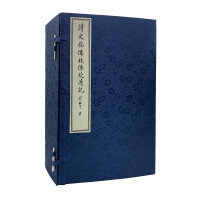
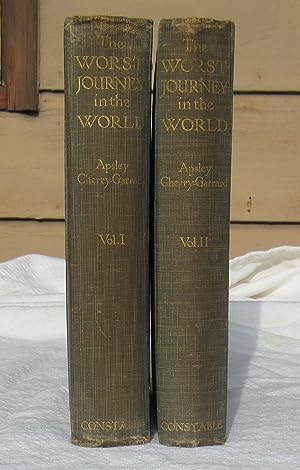
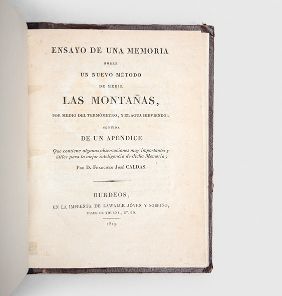
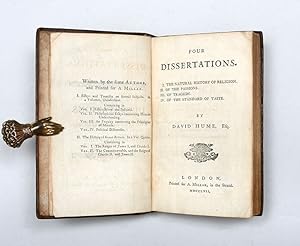
![Image du vendeur pour Histoire d'O, a collection formed by John Baxter [58 Vols]. mis en vente par Blackwell's Rare Books ABA ILAB BA](https://pictures.abebooks.com/inventory/md/md31053359790.jpg)
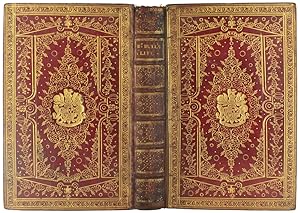
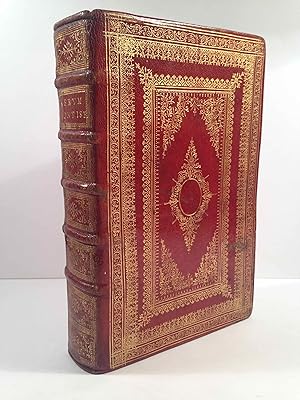

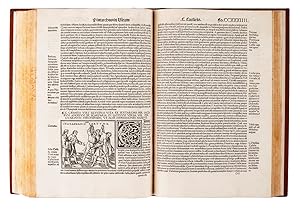
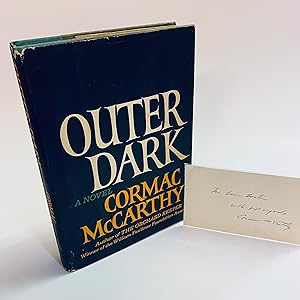
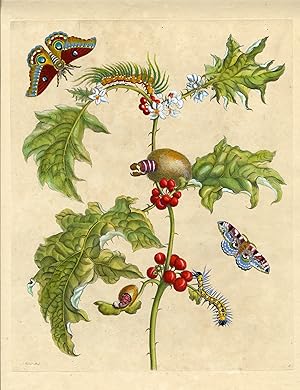
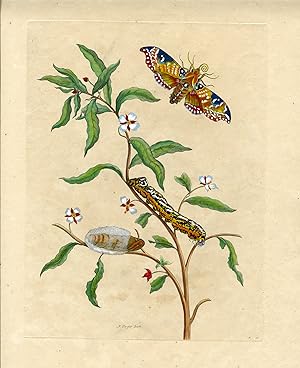
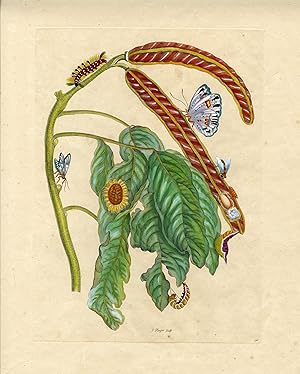
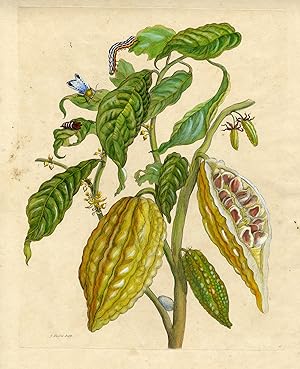

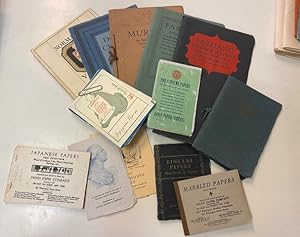

![Image du vendeur pour DISCVRSOS VARIOS POLITICOS. [1.ª EDIÇÃO - INCLUI RETRATO DE CAMÕES] mis en vente par Livraria Castro e Silva](https://pictures.abebooks.com/inventory/md/md10471480158.jpg)
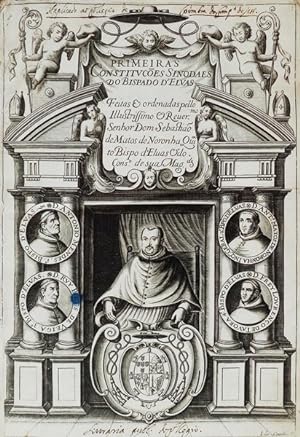
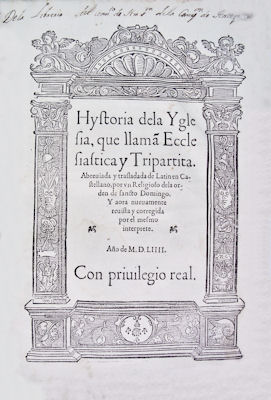
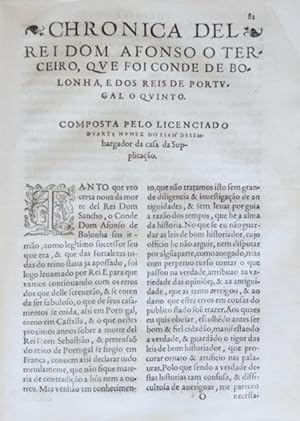
![Image du vendeur pour [Decree granting a salary to Johan Theodor, Baron of Friesheim, as chief bailiff and state prosecutor in 's-Hertogenbosch].The Hague, 2 April 1681. Folio (31.5 x 20.5 cm). Written in brown ink on paper, with the armorial seal of William of Orange stamped on a decorative paper cut-out over red wax. mis en vente par ASHER Rare Books](https://pictures.abebooks.com/inventory/md/md17263695960.jpg)
![Image du vendeur pour Trogi Pompei externae historiae in compendium ab Justino redactae.Including: PROBUS, Aemylius [recté NEPOS, Cornelius]. De vita excellentium imperatorum liber.VELLEIUS PATERCULUS, Caius. Historiae Romanae duo volumina, .(Colophon: Florence, Philippo Giunta, 1525). 3 works published as 1. 8vo. With Giunta's woodcut device on the title-page and a nearly identical one on the verso of the otherwise blank last leaf. Set in an Aldine-style italic, with numerous spaces with guide letters where manuscript initials could be filled in (left blank in the present copy). Dark green gold-tooled morocco (ca. 1833?), the with AAR-monogram of Antoine Augustin Renouard, gold-tooled board edges and turn-ins, pink watered-silk endleaves, matching ribbon marker, gilt edges. Attributed to the Bradel family in Paris, probably Antoine Louis François Bradel. mis en vente par Antiquariaat FORUM BV](https://pictures.abebooks.com/inventory/md/md22773865835.jpg)
